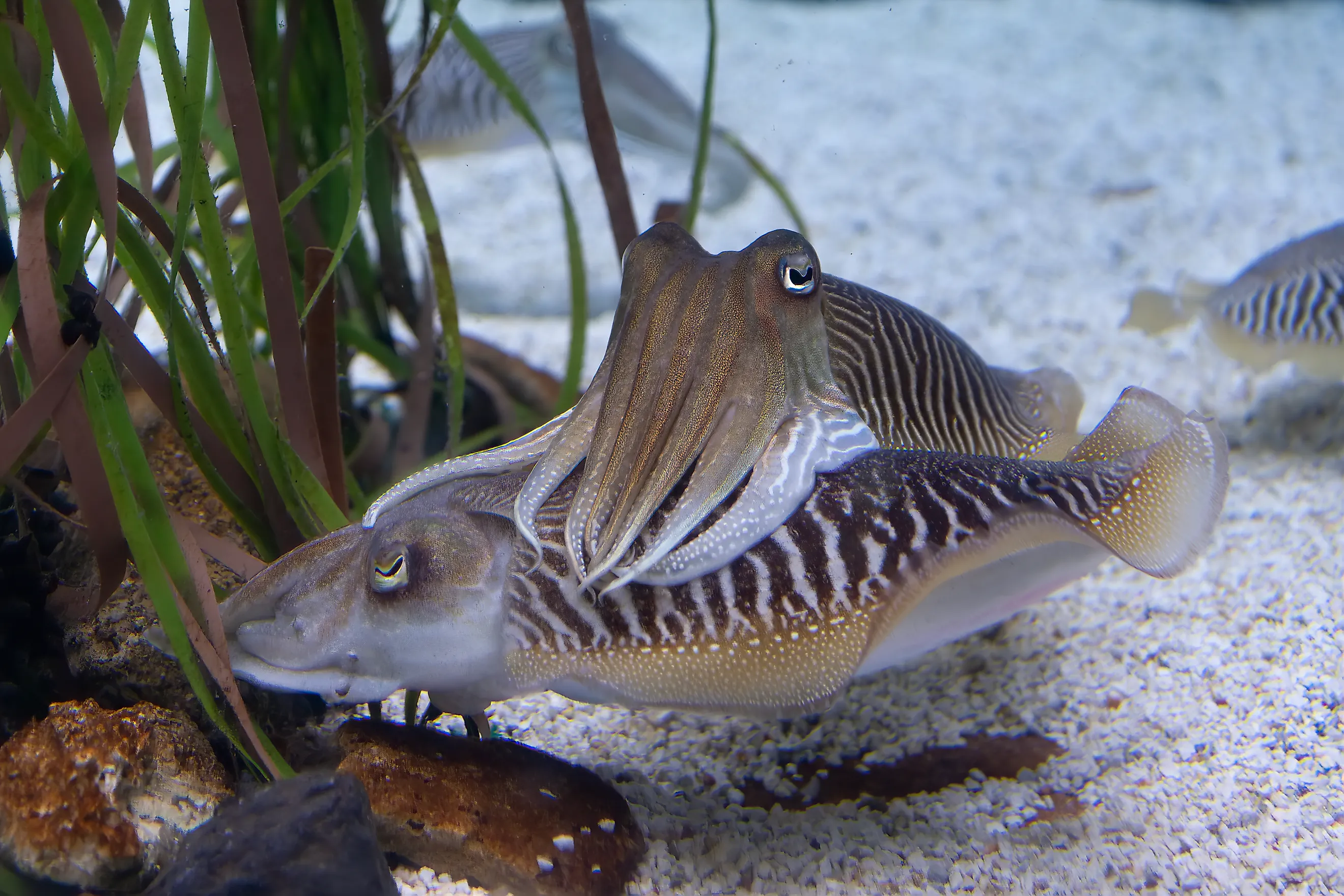
Cuttlefish And The One-Second Makeover
Among the most enigmatic creatures of the ocean, the cuttlefish possesses a camouflage system so advanced that it continues to challenge scientific understanding. In under one second, this cephalopod can transform its outward appearance to match the color, texture, and brightness of its immediate surroundings. This rapid and precise metamorphosis, often referred to as a "one-second makeover," is not merely a spectacle of nature but a sophisticated survival mechanism honed by evolution.
Unlike animals that rely on static patterns or seasonal changes in appearance, the cuttlefish adapts to its environment in real time. Whether swimming above sandy seafloors, hiding among coral outcrops, or stalking prey in rocky crevices, it performs visual mimicry with stunning accuracy. This article will examine the anatomical structures, neural control, and ecological roles that enable the cuttlefish to achieve instantaneous camouflage, revealing a complex interplay between physiology, perception, and behavior that continues to inspire biologists, engineers, and materials scientists alike.
What Is A Cuttlefish, Really?
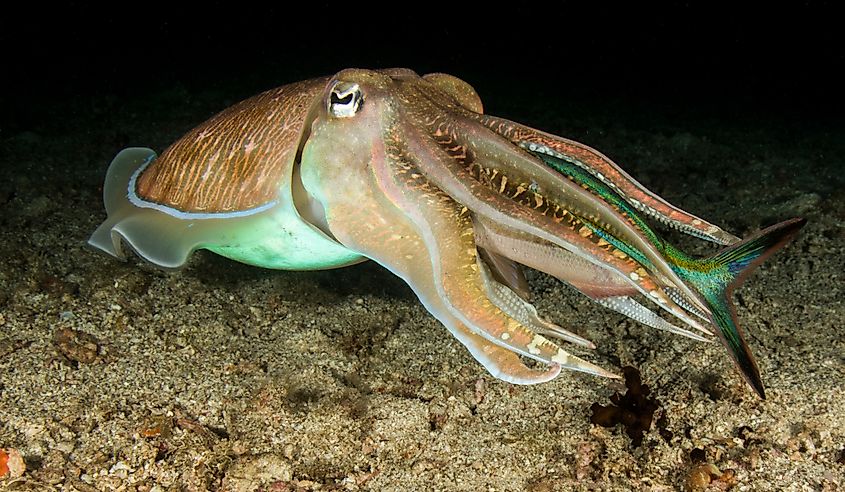
The cuttlefish is a marine mollusk in the class Cephalopoda, which also includes the octopus, squid, and nautilus. It has eight arms, two extendable tentacles, and a unique internal shell called the cuttlebone, which provides buoyancy control. The cuttlefish is not a fish, despite its name, but a soft-bodied invertebrate.
Its skin is the key to its camouflage ability. The surface is densely packed with specialized cells that allow rapid changes in appearance. Though cuttlefish are colorblind, they have highly developed eyes that detect contrast and polarized light. This visual system helps them assess their surroundings and select appropriate camouflage patterns. Cuttlefish are solitary and bottom-dwelling. They live in shallow coastal waters and feed on shrimp, crabs, and small fish. Camouflage aids both in hunting and avoiding predators such as sharks, dolphins, and larger fish.
Color In Motion: The Skin That Sees And Shifts
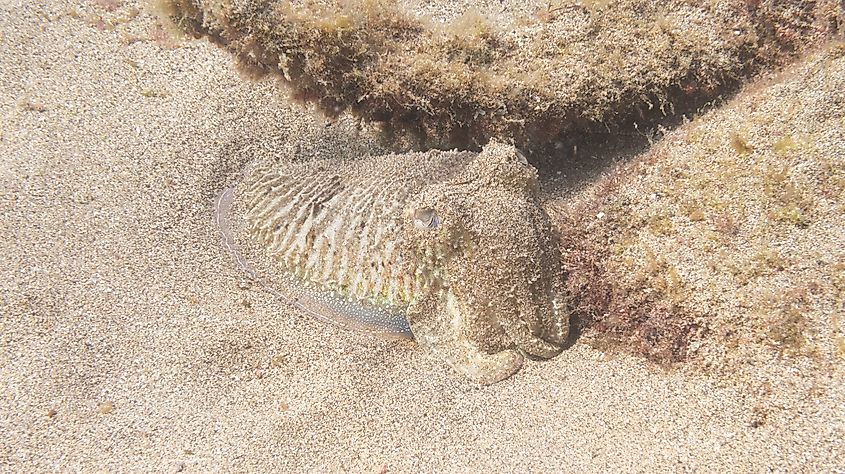
Cuttlefish camouflage depends on three main types of skin cells: chromatophores, iridophores, and leucophores. Together, these layers control color, reflectivity, and brightness. Chromatophores are elastic pigment sacs controlled by ring-shaped muscles. When the muscles contract, the sacs expand and display color. Each chromatophore contains red, yellow, or brown pigment. By adjusting the size of these sacs, the cuttlefish can create complex patterns in milliseconds.
Below the chromatophores are iridophores. These reflect light using stacked plates of proteins, producing iridescent greens, blues, and silvers. Iridophores are structural, not pigment-based, and reflect different wavelengths depending on viewing angle. Leucophores form the deepest layer. These cells scatter ambient light, allowing the cuttlefish to match background brightness and serve as a neutral base for the upper layers.
Roughing It Up: How Texture Seals The Illusion
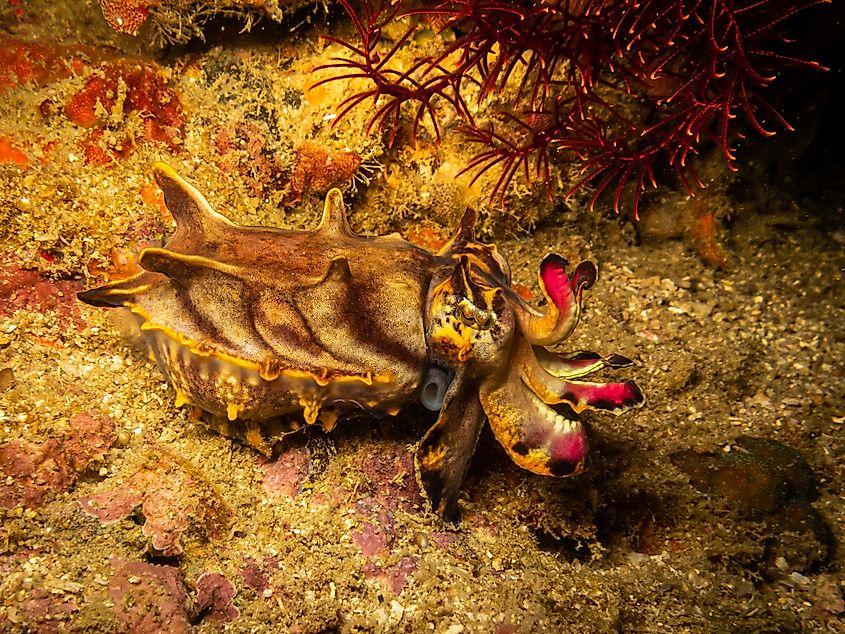
In addition to color, cuttlefish alter skin texture using papillae, small muscular structures that raise or flatten the skin. Papillae can create bumps, spikes, or ridges that mimic sand, gravel, or coral. These changes occur independently of color adjustments and contribute to three-dimensional camouflage. The entire system is under direct neural control. Unlike many animals that rely on slow hormonal changes, cuttlefish use fast-acting motor neurons to control chromatophores and papillae. This allows full-body transformations in less than one second.
Brains Behind The Magic
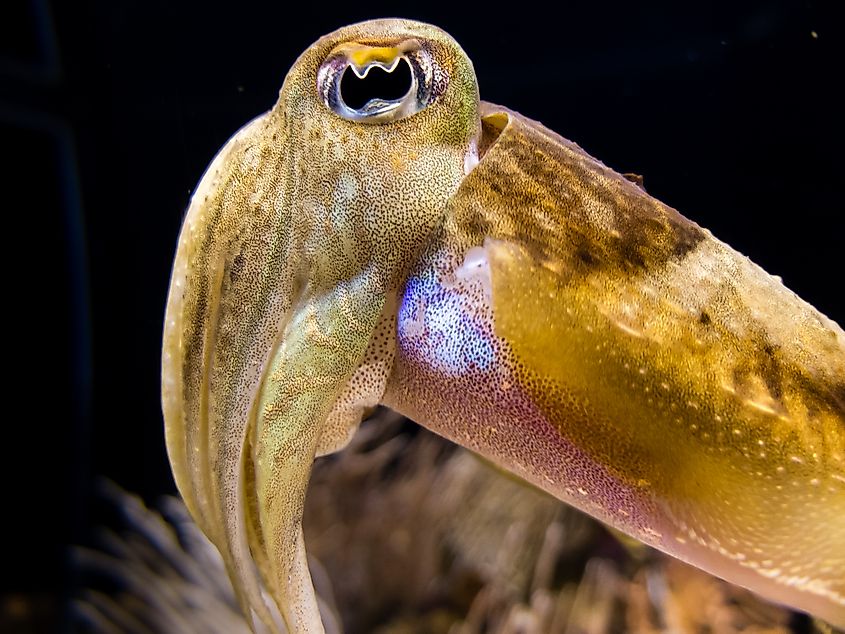
The cuttlefish’s camouflage is controlled by a highly developed nervous system. Its brain is large relative to body size and processes visual information quickly. Unlike animals that rely on reflex or instinctive responses, the cuttlefish evaluates its surroundings and chooses a camouflage pattern based on context.
Visual input is critical. Although cuttlefish cannot detect color, they excel at recognizing contrast, edges, and polarization. Their eyes contain a W-shaped pupil and can adjust focus precisely. They scan the environment for spatial frequency, texture, and light intensity, allowing accurate pattern selection.
Once the cuttlefish identifies a visual scene, its brain sends signals through motor neurons to activate specific chromatophores and papillae. This control is localized and fine-tuned. Each skin region can operate independently, producing complex, asymmetrical patterns. Cuttlefish skin may also process visual input directly. Some studies suggest that the skin contains light-sensitive proteins called opsins. This local sensing could provide feedback for finer control of pattern and brightness, though the extent of this ability remains under investigation.
Survival By Style
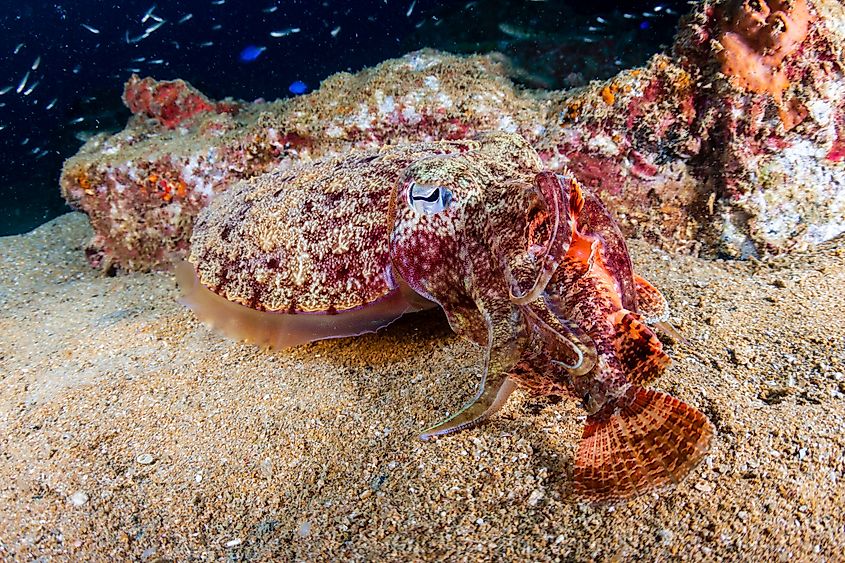
Camouflage provides the cuttlefish with critical survival advantages. In the wild, it avoids predators by blending into sand, rocks, and coral. It also uses camouflage to stalk prey, including shrimp and small fish, by approaching without detection. This dual function, defense and predation, has likely driven the evolution of its rapid, adaptive system.
Cuttlefish display three main camouflage modes: uniform, mottled, and disruptive. Uniform camouflage masks the animal on smooth, featureless backgrounds. Mottled camouflage mimics coarse, irregular textures. Disruptive camouflage uses bold, high-contrast patterns to break up the outline of the body. The cuttlefish switches between these modes depending on local visual cues.
Bioinspired Futures
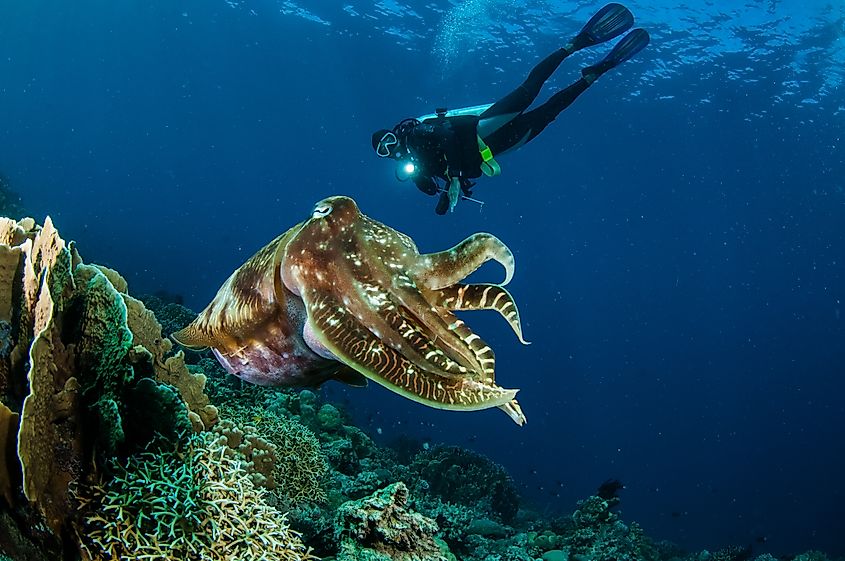
Researchers continue to study how the cuttlefish achieves this control with such speed and precision. Its system has become a model for bioengineering, particularly in the field of adaptive materials. Engineers have developed artificial skins and soft robots inspired by the structure and function of chromatophores and iridophores. Military research has also explored the potential for dynamic camouflage in uniforms and vehicles.
While much is known about the cuttlefish’s external transformations, key questions remain. How does a colorblind animal match its environment so precisely? What is the exact role of light-sensitive proteins in the skin? Ongoing studies in neurobiology, optics, and biomechanics seek to answer these questions and apply the findings to human technology.
Lessons From A Master Illusionist
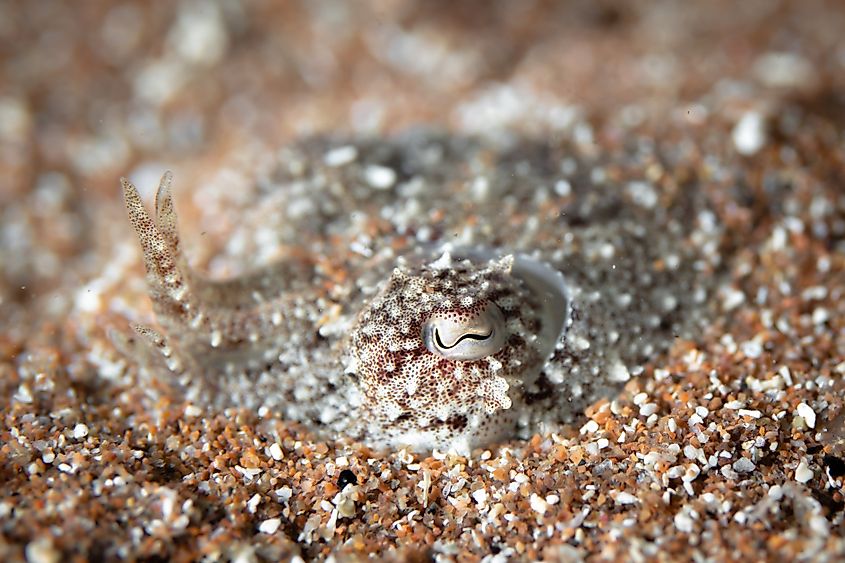
The cuttlefish’s one-second makeover is more than a biological curiosity. It is a precise, efficient, and highly evolved system that merges vision, neural control, and skin mechanics into a single act of survival. In less time than a human can blink, the cuttlefish reads its environment and disappears into it, not by magic but by biology refined over millions of years.
This ability challenges assumptions about animal perception, decision-making, and body control. It also bridges the gap between nature and innovation, offering a blueprint for responsive materials, dynamic camouflage, and robotics. The cuttlefish not only hides; it teaches. In a world full of loud displays and bright signals, the cuttlefish reminds us that mastery often lies in subtlety. In silence and speed, it becomes what it is not, and in doing so, reveals just how much we still have to learn from the sea.











